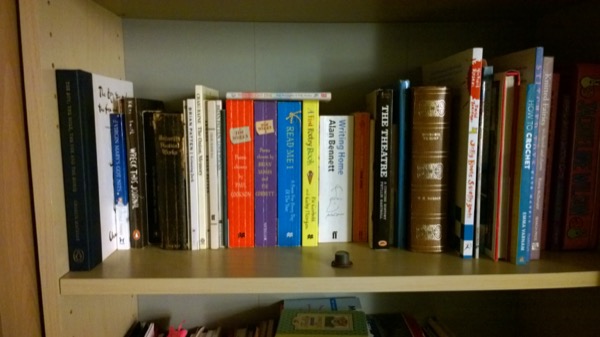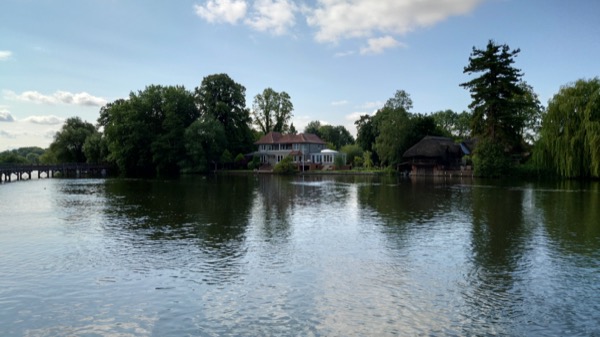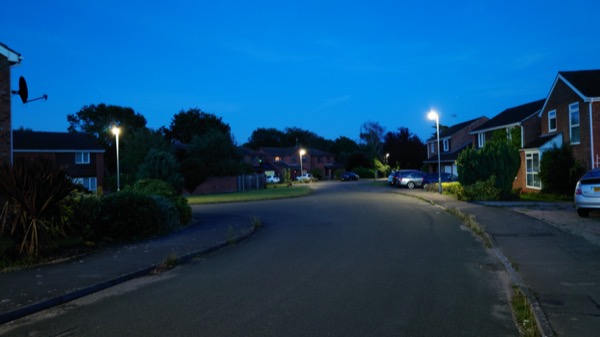As ever, a reminder of raw specifications and imaging features:
| Nokia 808 PureView (2012) | Nokia Lumia 1020 (2013) | Microsoft Lumia 950 XL (2015) | iPhone 12 Pro Max (2020) | Sony Xperia 1 iii (2021) |
|
Dedicated two-stage shutter button/launch key 41 MP RGB sensor, oversampling to 5MP, f/2.4, 1/1.2", contrast-based AF Xenon flash Single exposure |
Dedicated two-stage shutter button/launch key 41 MP RGB sensor, f/2.2, 1/1.5", contrast-AF, OIS Xenon flash plus LED video light Single exposure |
Dedicated two-stage shutter button/launch key 20 MP RGB sensor (oversampled to 8MP here), f/1.9, 1/2.4", PDAF, OIS Dual capture, image combination |
12 MP RGB sensor, f/1.6, 1/1.9" main sensor, Multiple frame stacking |
Dedicated two-stage shutter button/launch key Multiple frame stacking when needed |
Some notes on my methodology. All shots were handheld and on full auto where possible, with exceptions for:
- I allowed the Nokia 808 a tripod for low light shots, since there's no integral OIS. Which at least allows us to compare its output with more modern devices.
- Again in low light, I allowed myself a little ISO fiddling and manual focus on the three oldest devices in order for them to get a shot that's more comparable to the multi-frame 'night shots' from the two newest phones. I think this is fair enough - if one was out to get a special night shot then you'd expect to fiddle for 30 seconds to get settings which expose as you wanted.
- On the iPhone, I used its ProRAW capture setting. Not to do anything with the RAW files, but because this (in theory) misses out edge enhancement and sharpening. So, again in theory, the shared JPG files are as pure as the driven snow etc. However, see below for some comment on this topic. Gah.
In terms of resolution, the Nokia Lumia 1020 is limited to 5MP output for PureView purposes, so the framing of its crops is slightly different to the other phones here. But you'll still get a feel for the purity and detail. The 808 PureView comes with a 'Creative' 8MP PureView mode, which is very close to the 9MP 16:9 shots from the other phones.
Test 1: Sunny landscape
In fairness, the sun did keep going in and then coming out again, so excuse the odd test shot where the sun isn't quite as bright - I can't control the clouds! This is a nice test subject at 100m across the Thames, with oodles of detail to zoom in on (both cropping and in the next few test shots). Here's the whole scene:

And here are the original photo files, click to download, from Nokia 808, Lumia 1020, Lumia 950 XL, iPhone 12 Pro Max, and Xperia 1 iii.
To see what's going on at the pixel level and to assess purity, here are central 1:1 crops from in turn, the 808, the 1020, the 950, the iPhone 12 Pro Max, and the Xperia 1 iii





Perhaps the clue was in the 'PureView' bit of the name, but the Nokia pair from a decade ago win this test easily. Yes, yes, good lighting, but their results are realistic, even down at the pixel level, which is just astonishing. And there isn't a phone camera today that does oversampling from a RGB sensor, I believe. The Lumia 950's photo is a bit gaudy and a little too edge enhanced, the iPhone (surprisingly) makes a real mess of the finer natural detail, despite the ProRAW mode, and the new Xperia 1 iii gets closest to the Nokia pair, which is good to see. At least one phone manufacturer isn't over-egging their imaging, it seems.
Scores: Nokia 808 PureView: 9 pts; Lumia 1020: 10 pts; Lumia 950 XL: 8 pts; iPhone 12 Pro Max: 7 pts; Sony Xperia 1 iii: 9 pts
Test 2: Sunny landscape, zoomed x3
Actually 2.5x zoom, i.e. maximum PureView lossless zoom, on the Nokia pair, plus 2.5x on the iPhone, its native telephoto, and 2.9x, the first telephoto preset on the Xperia 1 iii. As for the Lumia 950, the camera UI is no help at all and I've no idea of the exact zoom factor!
Here are the original zoomed photo files, click to download, from Nokia 808, Lumia 1020, Lumia 950 XL, iPhone 12 Pro Max, and Xperia 1 iii.
To see what's going on at the pixel level and to assess purity, here are central 1:1 crops from each zoomed image, from in turn, the 808, the 1020, the 950, the iPhone 12 Pro Max, and the Xperia 1 iii:





The Nokia PureView pair are again pretty darned good, even stripped of their oversampling. That they can be competitive in this use case a decade after they appears, is so impressive. The Lumia 950 XL is best ignored here, since the lossless zoom only goes to 1.5x, so most of the crop above is lossy digital zoom. Just say no. The iPhone 12 Pro Max's more modern sensor and frame stacking mean higher dynamic range and more detail under tricky circumstances, just look at the boat name as an example, it's clear and sharp. Plus there's admirably little digital noise in the tarpaulin. But the new Xperia 1 iii just takes this zoom test, for me, with even clearer details, great dynamic range, and noise that's present but under control.
Scores: Nokia 808 PureView: 8 pts; Lumia 1020: 8 pts; Lumia 950 XL: 5 pts; iPhone 12 Pro Max: 9 pts; Sony Xperia 1 iii: 9 pts
Test 3: Sunny landscape, zoomed x5
Again, for comparison purposes, I'll leave the maximum PureView lossless zoom on the Nokia pair, but the other devices allow more software (or physical, on the Sony) zoom, so let's aim for about 4.5x zoom factor and see how we get on.
Here are the original (circa 4.5x) zoomed photo files, click to download, from Lumia 950 XL, iPhone 12 Pro Max, and Xperia 1 iii.
To see what's going on at the pixel level and to assess purity, here are central 1:1 crops from each zoomed image, from in turn, the 808, the 1020, the 950, the iPhone 12 Pro Max, and the Xperia 1 iii:





The Lumia 950 XL's software zoom at 5x is an unusable blocky mess, of course, that's expected. What's not expected is that the iPhone's software zoom on a 2.5x telephoto is so much better than the 4.4 optical zoom on the Xperia 1 iii. Now, partly this is because Apple's digital zoom algorithms have been excellent for a while now.
But it's also partly that there's something horribly wrong with the optics in Sony's 4.4x telephoto - it's as if there's no OIS, so perhaps this just doesn't work in this mode? It's all very strange. Other reviewers have note that 4.4x-shot photos look as if taken through a 'haze' and that results are normally better when software zooming on the 2.9x telephoto. Which is a bit crazy. Let's go for another zoom scene below and try again.
PS. I've given the two Nokias a neutral score since their 2.5x zoom is perfectly fine, it's just not at the level demanded here, etc.
Scores: Nokia 808 PureView: 7 pts; Lumia 1020: 7 pts; Lumia 950 XL: 5 pts; iPhone 12 Pro Max: 9 pts; Sony Xperia 1 iii: 6 pts
Test 4: Landscape take 2
A different side of the river, this time in shade - though there was plenty of light around. But yes, a test of dynamic range too. Here's the whole scene:
And here are the original photo files, click to download, from Nokia 808, Lumia 1020, Lumia 950 XL, iPhone 12 Pro Max, and Xperia 1 iii.
To see what's going on at the pixel level and to assess purity, here are central 1:1 crops from in turn, the 808, the 1020, the 950, the iPhone 12 Pro Max, and the Xperia 1 iii





The added lighting challenge hits the oldest phone first, of course, with an older non-BSI sensor. The Nokia 808 PureView is struggling to pick detail out of the shadow because of the high light levels in the sky - it just can't cope in terms of dynamic range. The Lumia 1020 does almost perfectly, thanks to OIS and a newer sensor. And those legendary PureView algorithms. The Lumia 950 produces a lighter image with more dynamic range, and with only a hint of enhancement. Not bad.
Onto the two newest contenders though. The iPhone's result is gloomier than I'd have expected and I'm wondering again whether I should just have left it in 'Auto' mode - the ProRAW isn't doing much here - is it possible that Apple has been tweaking it in the recent updates and that it's now trying as hard as full auto mode to render edges? The Xperia 1 iii gets close to the Lumia 950 but with a little noise and uncertainty spoiling the effect.
Scores: Nokia 808 PureView: 6 pts; Lumia 1020: 10 pts; Lumia 950 XL: 10 pts; iPhone 12 Pro Max: 8 pts; Sony Xperia 1 iii: 9 pts
Test 5: Landscape take 2, zoomed x3
The same scene but zoomed by 2.5-3x, according to phone camera system. Here are the original zoomed photo files, click to download, from Nokia 808, Lumia 1020, Lumia 950 XL, iPhone 12 Pro Max, and Xperia 1 iii.
To see what's going on at the pixel level and to assess purity, here are central 1:1 crops from in turn, the 808, the 1020, the 950, the iPhone 12 Pro Max, and the Xperia 1 iii





The Nokia 808 is stripped of PureView oversampling when zoomed in, of course - with no sky to worry about it does a lot better in terms of exposure, but there's clearly a lot of noise from the old sensor. The problem's there on the 1020 too and for the same reason, but the newer BSI sensor means that noise is lower and exposure better. Stunning zoomed detail for a 2013 phone, anyway.
The Lumia 950's image is blocky and lossy, as expected, though useable if you don't drill down to pixel level, as here. While the iPhone 12 Pro Max's telephoto disappoints by seemingly adding too much noise reduction, leaving everything slightly 'smeared'.
With a genuine 2.9x telephoto in place and decent image processing, the Xperia 1 iii wins this test easily. You can see all the bricks in the wall by the steps. Yes, perhaps very slightly over-constrasty, but look at all that wonderful zoomed detail. Very impressive.
Scores: Nokia 808 PureView: 6 pts; Lumia 1020: 7 pts; Lumia 950 XL: 7 pts; iPhone 12 Pro Max: 7 pts; Sony Xperia 1 iii: 9 pts
Test 6: Landscape take 2, zoomed x5
Again, for comparison purposes, I'll leave the maximum PureView lossless zoom on the Nokia pair, but the other devices allow more software (or physical, on the Sony) zoom, so let's aim for about 4.5x zoom factor and see how we get on.
Here are the original (circa 4.5x) zoomed photo files, click to download, from Lumia 950 XL, iPhone 12 Pro Max, and Xperia 1 iii.
To see what's going on at the pixel level and to assess purity, here are central 1:1 crops from each zoomed image, from in turn, the 808, the 1020, the 950, the iPhone 12 Pro Max, and the Xperia 1 iii:





The Lumia 950 XL's software zoom at 5x is is the usual blocky mess, of course, that's expected. But both the iPhone and Xperia also make a mess of zoom here. With less direct light, the software zoom on the iPhone (beyond the 2.5x telephoto) produces detail that's too soft - I think it could have done better. Ditto the Xperia 1 iii with its claimed '4.4x telephoto', which has indistinct detail (though still the best in these crops) and - again - it's clear that results should have been a bit better.
The curious thing is that the exact same optical elements and sensor are used in the Xperia for both 2.9x and 4.4x zoom, yet the former is nicely crisp and the latter not. Implying that someone at Sony got their lens calculations wrong. Again, could this be fixed, Hubble telescope-style, in a software update?
PS. I've given the two Nokias a neutral score since their 2.5x zoom was looked at in the previous test, it's just not at the level demanded here, etc.
Scores: Nokia 808 PureView: 4 pts; Lumia 1020: 5 pts; Lumia 950 XL: 3 pts; iPhone 12 Pro Max: 6 pts; Sony Xperia 1 iii: 8 pts
Test 7: HDR foreground
OK, moving away from zoom but staying in the sun, here's a typical close-up subject, a classic car, with sunlight reflections from the metal. HDR to the rescue, where present. Here's the whole scene:

And here are the original photo files, click to download, from Nokia 808, Lumia 1020, Lumia 950 XL, iPhone 12 Pro Max, and Xperia 1 iii.
No point in pixel level analysis when the subject is so close, so here are scaled crops from in turn, the 808, the 1020, the 950, the iPhone 12 Pro Max, and the Xperia 1 iii:





None of the photos are bad per se, but the iPhone clearly manages the sun's reflection from the bonnet best of all - unsurprising, as the iPhone (4S?) virtually re-invented HDR in phone cameras. The 12 Pro Max merges multiple exposures to virtually eliminate glare. The Lumia 950 and Xperia 1 iii aren't far behind though, again each with multiple exposures handling HDR well, in attractive form.
While the two single-exposure phone cameras, the mighty 808 and Lumia 1020, both struggle with the bonnet reflections, as you'd expect. Having taken loads of car and steam engine photos with both, I can confirm that blown out highlights are an Achilles Heel for both.
Scores: Nokia 808 PureView: 7 pts; Lumia 1020: 7 pts; Lumia 950 XL: 9 pts; iPhone 12 Pro Max: 10 pts; Sony Xperia 1 iii: 9 pts
Test 8: Low light indoors
From now on, the Nokia 808 is allowed a tripod mount, to make up for it not having OIS. A touch artificial then, but at least it shows what the original PureView phone is capable of, given some stability. Here's the whole scene, with a bookshelf in very low indoor light, with just one 40W light on the other side of the room, so darker than the photo makes it seem:

And here are the original photo files, click to download, from Nokia 808, Lumia 1020, Lumia 950 XL, iPhone 12 Pro Max, and Xperia 1 iii.
To see what's going on at the pixel level and to assess purity, here are central 1:1 crops from in turn, the 808, the 1020, the 950, the iPhone 12 Pro Max, and the Xperia 1 iii





All are very good considering the low light, but the Nokia 808 PureView shines here and shows what it can do, given a little help. Just amazing clarity. Away from the tripod though, and holding the phones with my hands, the iPhone 12 Pro Max (with sensor shift stabilisation) gives superb results, as we've come to expect, and the Xperia 1 iii isn't far behind, with similar OIS and multi-frame techniques.
The Lumia 1020 had first generation 'ball bearing' OIS and is starting to struggle here, while the 950 XL does a bit better, thanks to smaller optics and newer OIS.
Scores: Nokia 808 PureView: 10 pts; Lumia 1020: 5 pts; Lumia 950 XL: 6 pts; iPhone 12 Pro Max: 9 pts; Sony Xperia 1 iii: 8 pts
Test 9: Night time
Dead of night, my standard suburban test. I had to manually adjust focus on the Nokia 808 and 1020, plus the Lumia 950, since old contrast-based focussing just can't cope with such dark tests. Here's the whole scene, lighter here than it was to my eyes:
And here are the original photo files, click to download, from Nokia 808, Lumia 1020, Lumia 950 XL, iPhone 12 Pro Max, and Xperia 1 iii.
To see what's going on at the pixel level and to assess purity, here are central 1:1 crops from in turn, the 808, the 1020, the 950, the iPhone 12 Pro Max, and the Xperia 1 iii:





Showing how much imaging technology has improved in the intervening 8 years, the iPhone 12 Pro Max wins this night shootout, despite a full 3 second night exposure, completely handheld, it's just mind blowing how crisp things can be while the user's hands are wobbling all over the place. The Xperia 1 iii does well too, tied with the tripod-mounted Nokia 808 (which is - kind of - cheating!)
The Lumia 950 XL, my night champion for so long, isn't far off too, though it loses a point because I had to intervene in terms of setting focus. Ditto the classic Lumia 1020, showing noise here despite the PureView oversampling.
Scores: Nokia 808 PureView: 9 pts; Lumia 1020: 7 pts; Lumia 950 XL: 8 pts; iPhone 12 Pro Max: 10 pts; Sony Xperia 1 iii: 9 pts
Test 10: Party time
No bottle of beer this time, but still a good example of a 'party' shot, in low light with moving people. I forced flash on in each case, though note that the iPhone simply refused to cooperate, always dropping back to gathering natural light. Cocky blighter that it is! Note that the units were snapped by my wife at a distance of two metres, so typical 'normob' handling, factoring in hand shake.
I'll spare you the overall scene, since there's just me and a blank wall(!) To compare the shots, here are central scaled crops from in turn, the 808, the 1020, the 950, the iPhone 12 Pro Max, and the Xperia 1 iii:





Winners here for me are the Lumia 1020, with Xenon flash and ambient background capture, just a terrific system, plus the 2021 Xperia 1 iii, which uses modern sensor, multi-frame capture, and LED flash to good effect. The Nokia 808's Xenon flash froze motion but didn't quite light the scene as I'd hoped, the Lumia 950 did its best but a 2015 sensor and LED flash has its limitations. While the sulking iPhone, refusing to use flash at all, produced a crisp enough image, thanks to computational photography and throwing out frames which were blurred, but an end photo which was a bit gloomy.
Scores: Nokia 808 PureView: 7 pts; Lumia 1020: 10 pts; Lumia 950 XL: 6 pts; iPhone 12 Pro Max: 7 pts; Sony Xperia 1 iii: 10 pts
Verdict
I've no idea which way this has gone, the scores seemed all over the place, so let's do a count up anyway:
- Sony Xperia 1 iii: 86 pts
- Apple iPhone 12 Pro Max (ProRAW): 82 pts
- Nokia Lumia 1020: 76 pts
- Nokia 808 PureView (+ tripod): 73 pts
- Microsoft Lumia 950 XL: 67 pts
Given the zoom tests, it's perhaps not surprising that the Lumia 950 XL brought up the rear, that was always its Achilles Heel. The 808 PureView was helped a lot by the tripod in low light, but its older sensor struggled - you've got to know exactly how to get the most from this imaging classic. The stabilised Lumia 1020 is a lot better in full 'auto', but it's also very slow by today's standards, which would play a part if this was a real world 'imaging experience' test.
Unsurprisingly, the two newest imaging champions were comfortably out in front, with the Sony Xperia 1 iii impressing hugely most of the time (as did the Xperia 5 ii before it), thanks to great strides in image processing software. Sony always seems to miss something though, and here its performance of the 4.4x telephoto. If this can be fixed up in software then the Xperia 1 iii will win by an even bigger margin.
I do like the idea of 'two telephoto lenses in one' on the Sony - you get the advantages of a typical (circa 5x zoom) periscope, yet with the flexibility of a 3x lens for every day shots. But - again - it needs work from Sony to improve results further.



